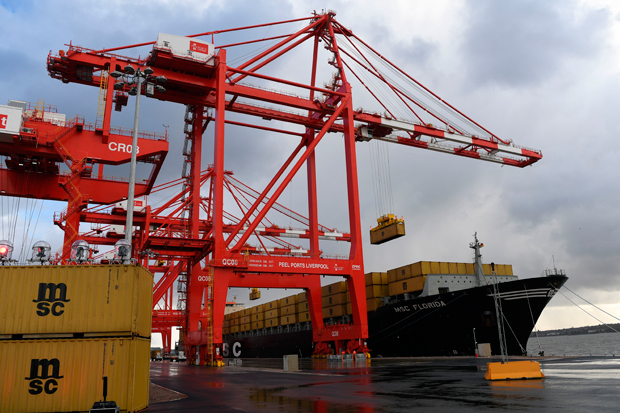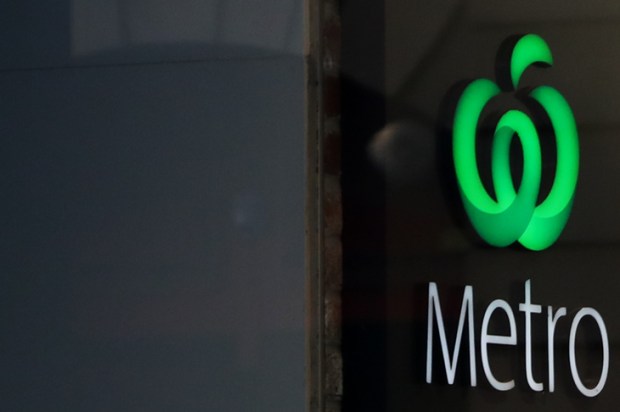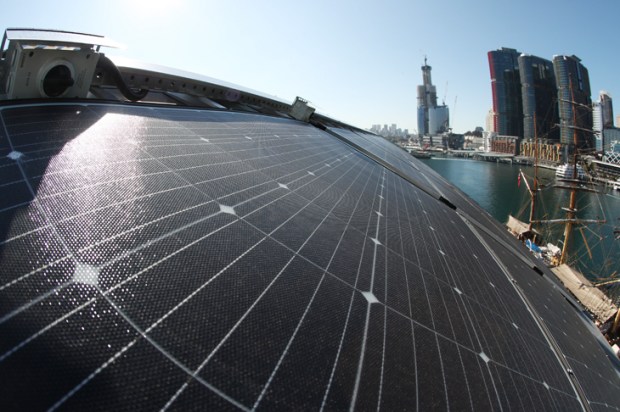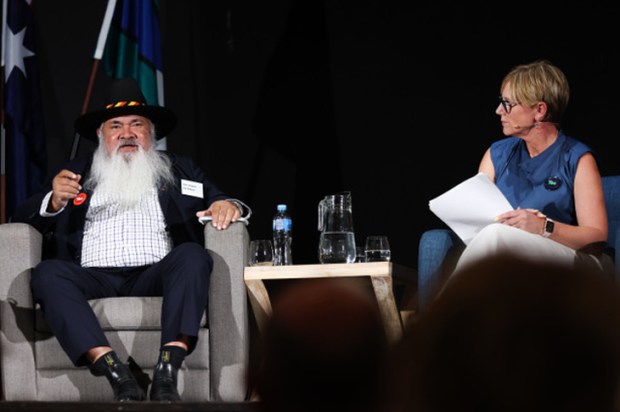‘Free beer for all the wharfies when the red revolution comes’
When Chris Corrigan’s 1998 stevedore revolution changed the Australian waterfront forever, the wharfies, unlike this old lefty song, got redundancies rather than free beer. As then PM John Howard wrote of Corrigan, ‘Without his courage and strength waterfront reform would not have been achieved’. Now in his 70s, Corrigan, having fought his way back by takeover to end up once again in control of the Patrick stevedoring company with which he beat the wharfies (only to have it taken over by a rival) is stepping down from the top job as chairman of Qube Holdings, Patricks new parent company. But he is leaving before the fight is totally over; it is not all plain sailing on the waterfront. Earlier this year, Patricks was dogged by work stoppages, especially in its Sydney port operations, as the Corrigan revolution’s momentum for increased efficiency on Australian wharves has slipped a little. ‘Since 2013, both wharfside and landside indicators of productivity and efficiency have declined at three of Australia’s largest container ports, Melbourne, Sydney and Brisbane’, with Sydney having the worst crane rate fall and Melbourne and Brisbane affected by rising truck turnaround time, according to last year’s Australian Transport Research Forum. Even after the multi-millions of dollars stevedore companies have spent on automation (with the offsetting labour cost savings), there is little prospect of early efficiency improvements (or a recovery in their lower margins), particularly in view of the excess capacity resulting from increased competition and technical difficulties from larger ship sizes.
Corrigan’s revolution had brought an end of the more blatant of the inefficiencies and chaos that had burdened Australia consumers and exporters with multi-billions of dollars of unnecessary costs. The Productivity Commission had reported that these had resulted in wharf charges up to three times greater than comparable countries, along with lower productivity and less reliability. The half-hearted Hawke government waterfront reforms, prompted by radical containerisation, had meant the disappearance of four thousand wharfies’ jobs (compensated by taxpayers), but Corrigan’s assault meant not only being able to halve his waterside workforce, but also to dump indefensible money-wasting union-won work-practices. Even the leftist Evatt Foundation admitted, a few years later, that ‘The success of Corrigan’s new [waterside] work regime is undeniable. The average number of containers moved from a ship per hour has doubled to 25.’ Automation has since lifted this to over 50. But we are way behind what is possible; Asian ports like Yokohama achieve up to 180 Modern cranes are designed to move at least 40 containers an hour; our usage has eased back to only 29.7.
This sort of under-utilisation will eventually be solved by a continuation of the rising tide of containers that has seen a more than doubling since the Corrigan victory to 7.2 million. But the forecast 170 per cent jump over the next 16 years in container movements through our ports to 19.4 million will create a much greater problem for road users and rail networks. There will have to be a massive switch to rail to avoid an unnerving increase in containers being trucked through city streets and along congested highways. For Sydney, with just under a third of Australia’s container movements, it will need much more than the various link roads under way or planned along with the rapidly expanding inter-modal terminals for transferring containers from one form of transport to another. A huge increase is needed in the present meagre 13 per cent of containers railed by the dedicated freight line from Port Botany, representing an 80 per cent under-utilisation due, according to Ernst and Young, to ‘unreliable and uncompetitive conditions’, with improved efficiency being a greater need than more infrastructure. For Melbourne, with more than a third of present container movements, the problem is worse; only 11 per cent of containers leave the port by rail (on a non-dedicated freight line competing with passenger traffic). And with the new major automated container ship berths not being linked to any rail network, Westgate bridge will look like wall-to-wall container trucks.
Got something to add? Join the discussion and comment below.
Get 10 issues for just $10
Subscribe to The Spectator Australia today for the next 10 magazine issues, plus full online access, for just $10.
You might disagree with half of it, but you’ll enjoy reading all of it. Try your first month for free, then just $2 a week for the remainder of your first year.














Comments
Don't miss out
Join the conversation with other Spectator Australia readers. Subscribe to leave a comment.
SUBSCRIBEAlready a subscriber? Log in